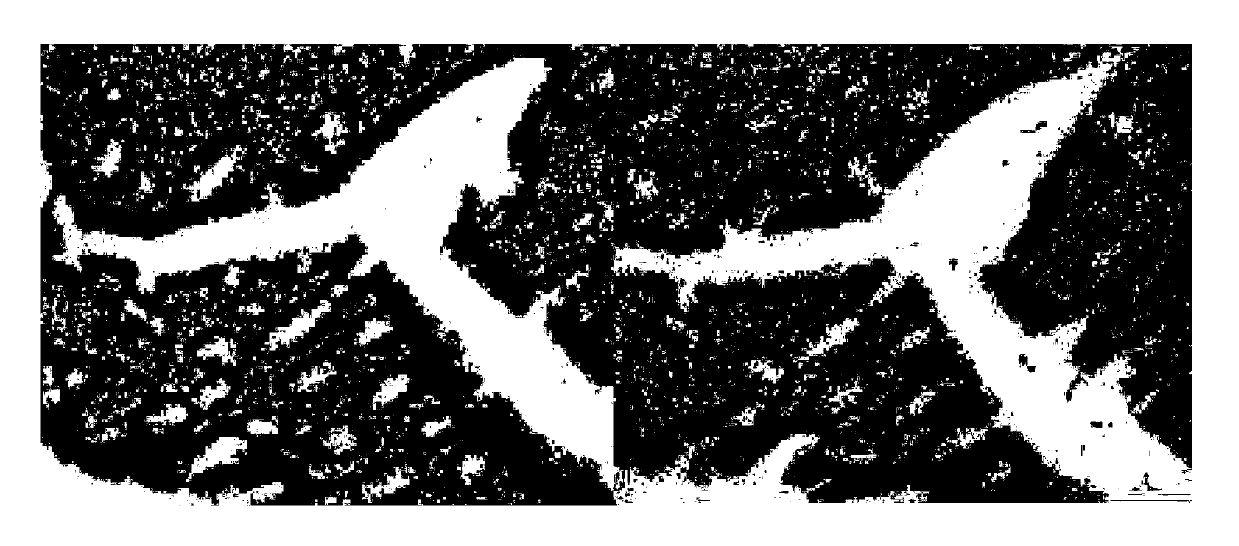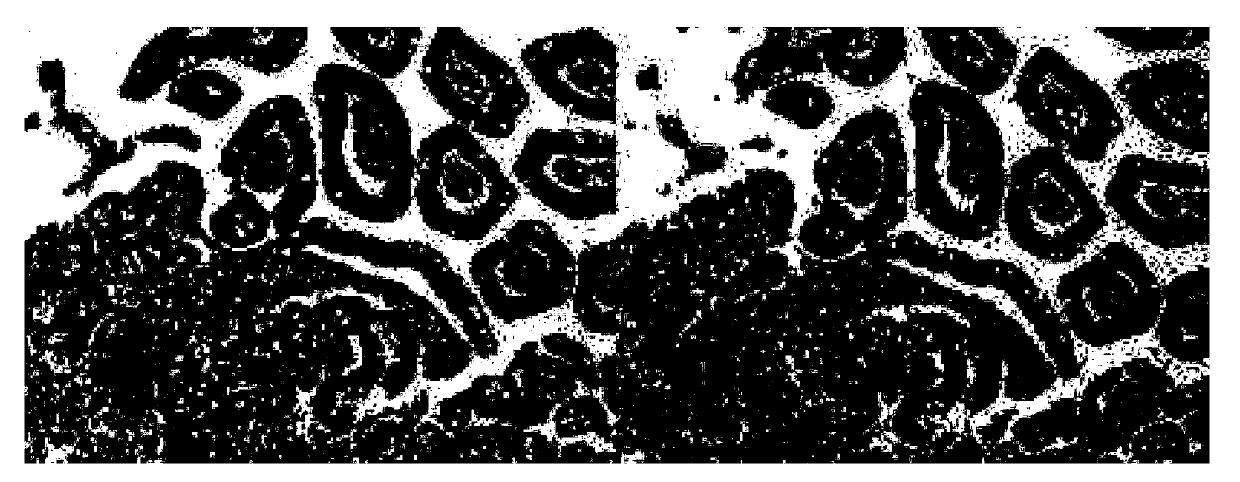Anti-CK20 protein monoclonal antibody and cell line and preparing method and application thereof
A monoclonal antibody, CK20 technology, applied in biochemical equipment and methods, anti-animal/human immunoglobulin, and microbial-based methods, etc., can solve the problems of high detection cost, unclear background information of monoclonal antibodies, and dependence
- Summary
- Abstract
- Description
- Claims
- Application Information
AI Technical Summary
Problems solved by technology
Method used
Image
Examples
Embodiment 1
[0020] The preparation of embodiment 1 recombinant CK20 protein fragment
[0022] The CK20 protein sequence numbered P35900 was selected from the Uniprot database (http: / / www.uniprot.org) as a standard sequence. According to its DNA-binding structure, antigenicity, hydrophilicity and hydrophobicity of constituent amino acids, and secondary structure, a region with a suitable length and special antigenicity that is different from other similar proteins is selected as the antigenic peptide. The 411th to 424th amino acid sequence of the selected CK20 amino acid sequence is selected, and its corresponding nucleotide sequence is SEQ ID No.1. Synthesize the above CK20 protein, add sulfhydryl modification to its N-terminus and couple with the carrier protein KLH to improve its immunogenicity, and use it as an immunogen for future use.
Embodiment 2
[0023] Example 2 Establishment of 10F6B12A9 hybridoma cell line
[0024] 1. Immunity
[0025] The CK20 protein-KLH conjugate obtained in Example 1 was diluted to 1 mg / mL, and then mixed and emulsified with an equal volume of complete Freund's adjuvant (CFA, Sigma Company), for Balb / c mice of 18-20 g ( (purchased from Fuzhou Wu's Experimental Animals) for abdominal injection immunization, the injection dose was 50 μg / animal. Immunization was boosted every 14 days thereafter, and the antigen was emulsified with incomplete Freund's adjuvant (IFA, Sigma Company) at a dose of 25 μg per mouse. 14 days after the second booster immunization, indirect ELISA (wavelength 450nm) was used to detect the multi-antibody titer against the immunogen in the mouse serum. 50μg / only.
[0026] 2. Cell Fusion
[0027] Aseptically prepare the mouse splenocyte suspension that meets the immune standard, mix it with mouse myeloma cell sp2 / 0 (ATCC) at a ratio of 5:1, centrifuge at 1000rpm for 10min, d...
Embodiment 3
[0031] Example 3 Preparation of Monoclonal Antibody by Ascites Induction Method
[0032] 1. Ascites preparation
[0033] After culturing the cell line to the logarithmic growth phase, wash with serum-free medium and resuspend, count 2×10 6individual / mL. The suspended cell solution was intraperitoneally injected into BALB / C mice sensitized with paraffin oil for 10 days, and each mouse was injected with 0.5 mL. Ascites was collected 7 days after feeding the mice. The collected ascites was centrifuged at 4°C and 8000rpm for 10 minutes, the supernatant solution was collected in a centrifuge tube, which was ascites, and stored at 4°C or -20°C.
[0034] 2. Purification of monoclonal antibodies
[0035] Using rProtein A sepharose Fast Flow (GE Company) affinity chromatography column to purify antibody from ascitic fluid is mainly divided into: ① Packing column, packing the protein A stuffing that buys in right amount in the gravity chromatography column and equilibrating buffer s...
PUM
 Login to View More
Login to View More Abstract
Description
Claims
Application Information
 Login to View More
Login to View More - R&D
- Intellectual Property
- Life Sciences
- Materials
- Tech Scout
- Unparalleled Data Quality
- Higher Quality Content
- 60% Fewer Hallucinations
Browse by: Latest US Patents, China's latest patents, Technical Efficacy Thesaurus, Application Domain, Technology Topic, Popular Technical Reports.
© 2025 PatSnap. All rights reserved.Legal|Privacy policy|Modern Slavery Act Transparency Statement|Sitemap|About US| Contact US: help@patsnap.com



